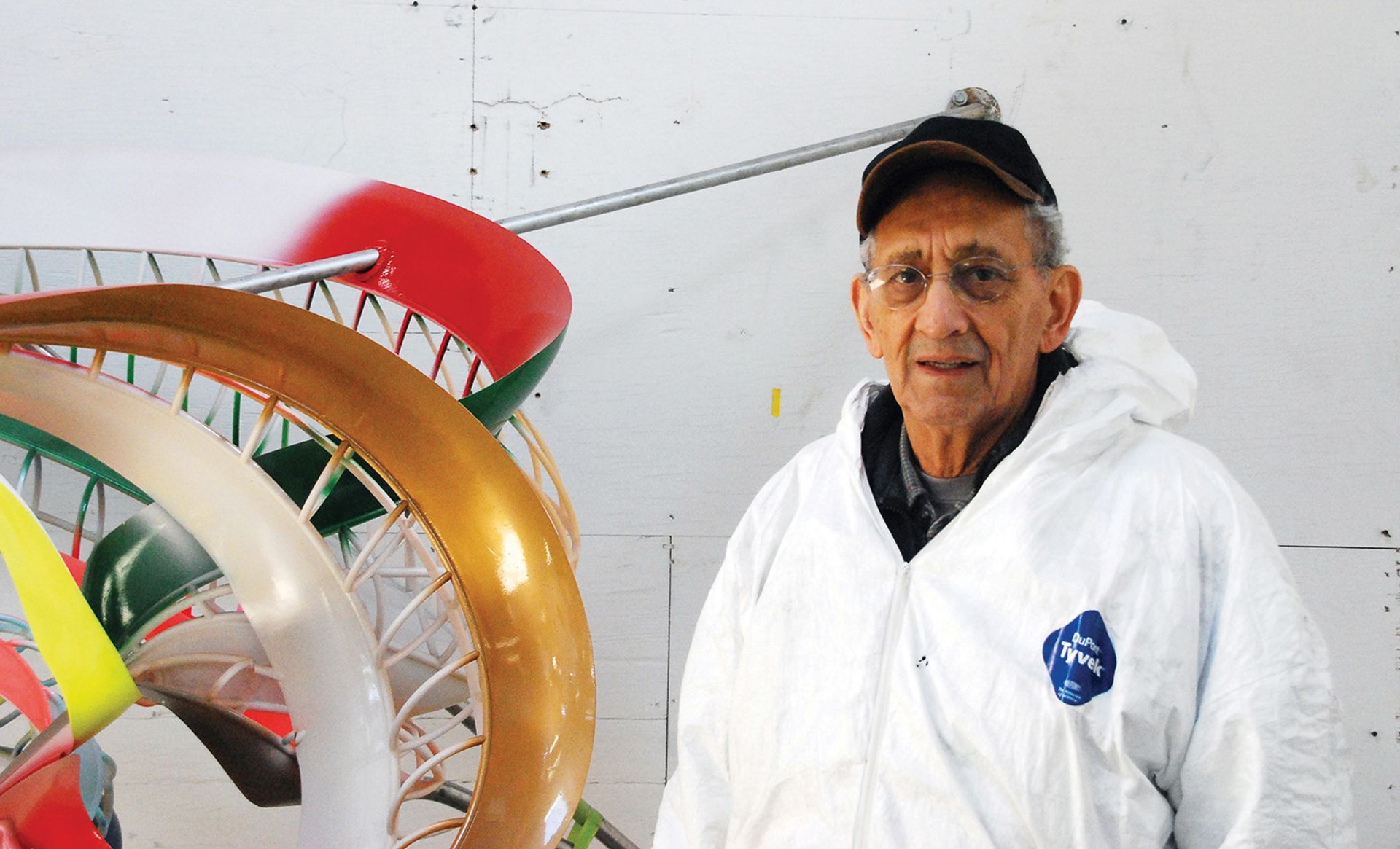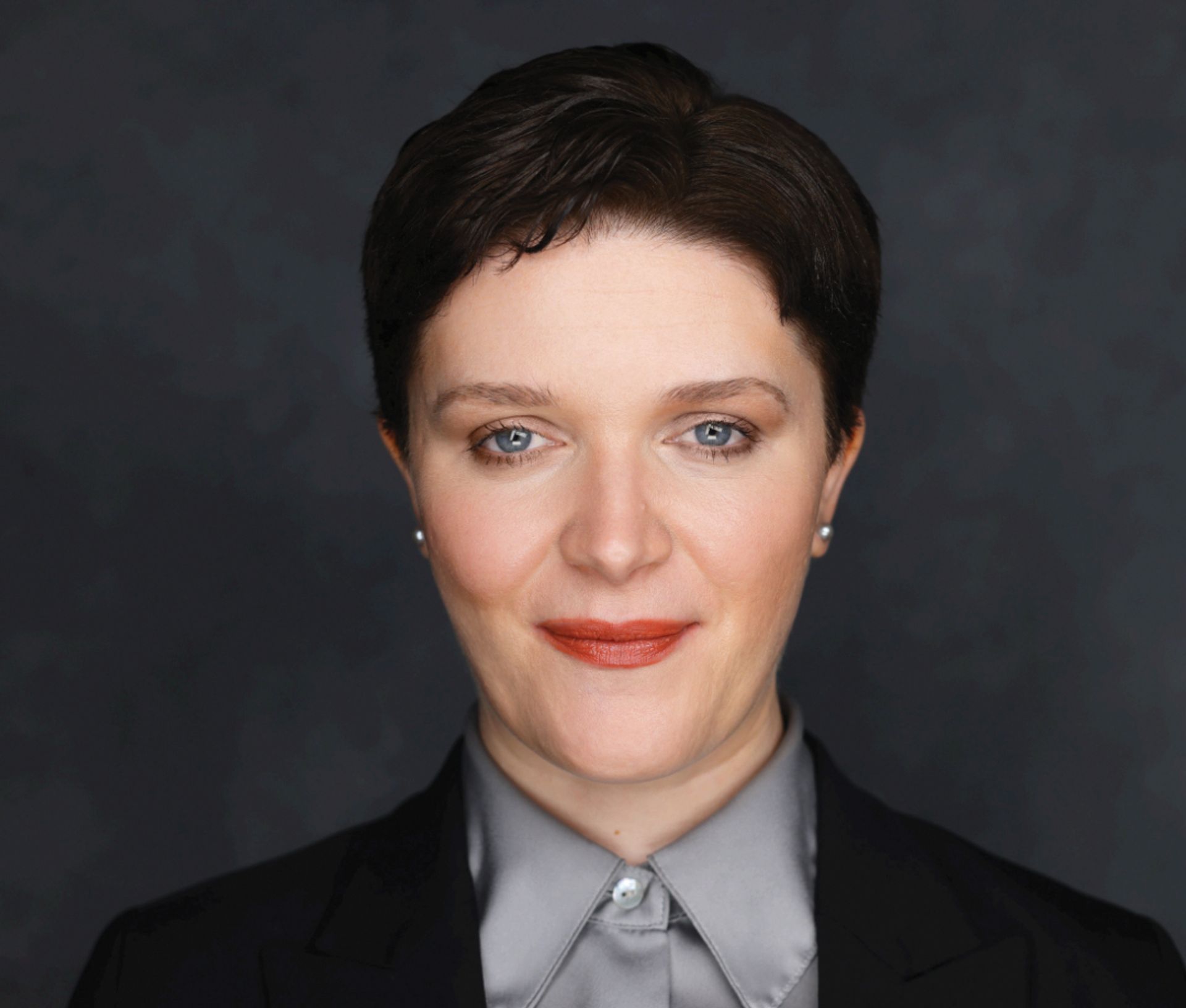For the digital art community, life has changed since the 2021 explosion of interest in NFTs (non-fungible tokens) that certify provenance and ownership of works of art. The precipitous drop in value of some cryptocurrencies, the far-reaching bankruptcy of the crypto exchange FTX, and the ascent of generative AI (artificial intelligence) have all drawn focus away from smart contracts—computer programs that execute transactions automatically—as a way of engineering equity for artists.
With the EU’s AI Act set to become law just as the UK heads to the polls this month, the question now is whether, and how, government might support artists at a time when creativity is fast becoming the productivity of the future.
Before his death earlier this year, Frank Stella had been a prominent champion of artists’ rights and the idea of automated royalties. For one of his final series, Geometries (2022), Stella granted collectors a licence to create a derivative of a digital work along with a link to make a 3D print of it. A collaboration with Arsnl Art, the Artists Rights Society’s digital platform, Stella’s smart contract was coded with a 10% resale royalty to be paid automatically upon further transfers of the work. Despite its reputation as a vehicle for speculation, the NFT has the ability to automate royalty payments via smart contract, which remains one of its principal benefits.

Frank Stella, who died in May, championed artist resale rights all his life Katherine Hardy
For Katarina Feder, the chief executive of Arsnl, “The NFT blew open the conversation about resale royalties, but it didn’t render them legally binding.” During the bull market of 2021, the market for digital art was often celebrated as a “creator economy”, with artists benefiting from ongoing sales of their work. However, the crash of 2022 led to a decline in secondary market sales of NFTs, and therefore royalty payments to artists. Heightened competition for collectors prompted leading NFT marketplaces such as OpenSea and Blur to stop remitting royalties, which has given rise to a “collector economy” that increasingly resembles the art world. In Feder’s view, the introduction of a digital sales tax would help “to protect artists from self-interested collectors and greedy auction houses that aren’t legally compelled to pay royalties”.
The problem for any new government wishing to turn the UK into a haven for digital artists, or a trading hub for digital assets, is that it requires embracing Web3 technologies—blockchain, NFTs, and smart contracts—at a time when the wider digital economy still relies on a centralised Web2 architecture. As a distributed ledger, the blockchain’s inherent decentralisation is a challenge to national governments because it allows for peer-to-peer transactions and therefore potential criminality. Yet Web3 also has the power to confront the exploitation and extraction that plague tech-capitalism. The conversion of the Ethereum blockchain to a new mode of consensus by which transactions are confirmed across its distributed network has rendered it simultaneously 99.95% more energy efficient. The fact that the vast majority of NFTs are traded on Ethereum means that it may help support and grow the cultural economy into the future.
While digital art was the proof of concept for NFTs, it was the online platform Dada that coded royalties into its smart contracts for the first time in 2017. Led by Beatriz Ramos and Yehudit Mam, whose treatise The Invisible Economy established a blockchain-based alternative economy for the arts, Dada offers a space for people around the world “to create spontaneous visual conversations together, in spite of language, distance, nationality, or other artificial boundaries”. By capturing the value of the art, it aims to “reward people for their contributions with a passive income via a token economy”. With its original core rooted in Latin America, Dada embodies the progressive strain of Web3’s otherwise anarcho-capitalist politics.
What Dada pre-empted and The Platform ultimately enacted was a social smart contract that enabled “immediate and precise distribution of revenue to all those who contributed value.” Founded by Sparrow Read and Melissa Gilmour, The Platform allowed Mam to publish her novel Quién te manda (2022) in a way that compensated everyone involved. Designed as an NFT, the project used Ethereum’s ERC-1155 token standard to allocate royalties to different contributors: 35% to the publisher and to the writer, with the rest distributed between the cover artist and book designer. By fractionalising compensation, The Platform acknowledges that creation nearly always involves collaboration. At a moment when one’s digital productivity can be screen-captured, and therefore quantified, smart contracts can help to monetise what was once invisible labour and automate equity in the process.
For Mam, the problem with smart contracts is their inability to scale. “As a community grows and the number of contributors increases, it becomes increasingly difficult to remunerate fairly.” Ramos argues that it is simply “impossible to enforce royalties in a decentralised ecosystem”, which is where government regulation could actually make a difference. When the UK introduced its Artist’s Resale Right Regulations back in 2006, fears that it would force local dealers to sell in Switzerland or the US, where no royalties are due, proved unfounded.
Uncoupling art from money
One platform that seeks to uncouple art from money entirely is zeroone. In return for creating a new work, users are granted ten credits with which to collect works by other artists. While some have criticised the project for encouraging artists to give away their work, for others the gift economy has benefited their markets. According to the project’s co-founder, Ludovica Rosi, what makes zeroone different is that “the audience is not a group of passive likers or followers but rather investors—deeply invested collectors who support creators in their careers”.
Art Blocks has incorporated charitable giving into its smart contracts since it launched its marketplace in 2020, popularising generative art (made with code) and raising over $50m for charities in the process. But for most companies, smart contracts remain difficult to deploy. Nick Hladek, a data analyst at Toyota, puts it plainly: “As much as it may pain diehard crypto-libertarians, the technology needs to be placed thoroughly under the hood of products if it is ever to gain any traction in the real world.” This is precisely the problem that Art Blocks’s chief executive and founder, Erick Calderon, has sought to solve with Generative Goods, a new platform to develop “physical-optional digital-optional products with real-world utility that are verifiably unique”. The ability for consumers to generate a one-of-a-kind digital or physical object that is part of a wider “family” of products distinguishes generative production from the assembly line. Increasingly, it is also part of the calculus of luxury houses keen to engage a new generation through unique digital experiences.
Rather than attempting to control the blockchain itself, governments could focus on collaboration with exchanges and platforms, providing regulation and the force of law as a serviceChris King, ClubNFT
For Harry Halpin, who works to ensure digital privacy by building decentralised infrastructure, smart contracts can help to restore trust in the operations of government through their transparency. “Simply put, if you wish to drain the swamp, a smart contract may make much more sense than support for Trump,” he says. Ironically, trustlessness—not needing to rely on a trusted third party—has been part of the logic of Web3 since the Bitcoin White Paper. Yet according to Chris King, co-founder of ClubNFT (where, for full disclosure, this writer manages editorial), “the trustless web actually depends on trust. Government, especially local government, can bring trust to automated exchanges, while the damage from government missteps can be mitigated. Rather than attempting to control the blockchain itself, governments could focus on collaboration with exchanges and platforms, providing regulation and the force of law as a service.”
Ahead of the general election, Labour and the Conservatives have been keeping their powder dry. London remains a global hub for the creative industries, which grew 60% faster than the wider economy in the decade before the pandemic. Yet according to a recent study by the thinktank Erskine Analysis, “emerging data and industry insights suggest a need for strategic action”. For Eliza Easton, founder of Erskine, “A new government needs to increase investment in R&D in the creative industries in order to catalyse local multiplier effects, while ensuring that the investment is long-term and not fad-driven.”

Racheal Muldoon sees that process as the model for an automated digital economy involving AI, blockchain and smart contracts Courtesy of Rachael Muldoon
Racheal Muldoon, a London-based lawyer, has been at the heart of disputes involving NFTs and cryptocurrency. In her view, the UK is as much as eight years behind the EU in drafting a comprehensive framework for AI regulation. This means that “the new government of the day will be left with no other feasible option than to copy the EU’s AI Act, but all too late, leaving companies with insufficient time to comply”. However, she is unequivocal on the transformative ability of smart contracts if adopted broadly to automate transactions. “If you have the law of England and Wales providing guardrails for interoperability between the ‘holy trinity’ of blockchain, responsible general and generative AI algorithms, and smart contracts, then you have an automated economy. That is a future for the UK.”
• Alex Estorick is a writer, editor and curator with an interest in emerging technologies. He is editorial director at ClubNFT and editor-in-chief of Right Click Save


